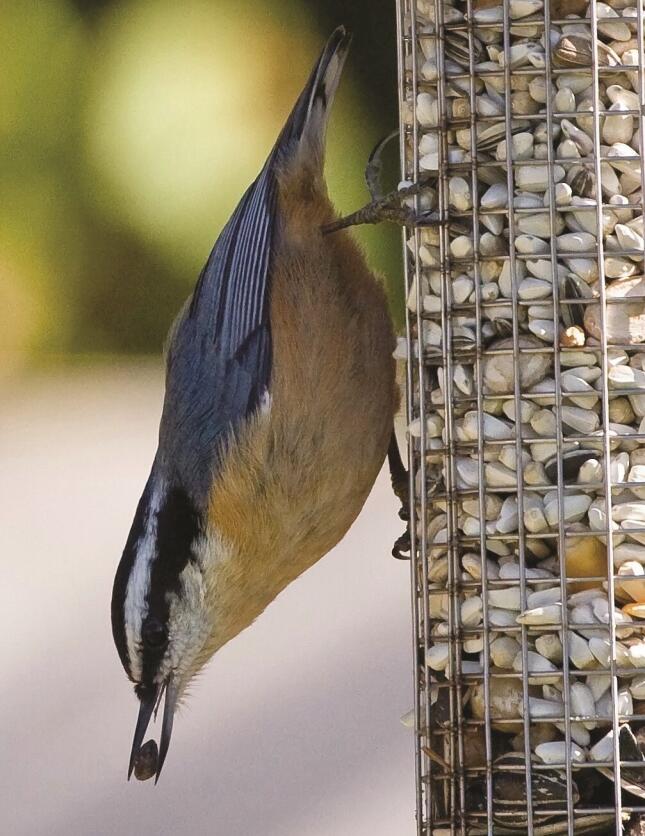November: The Warblers Are Here!
 Take your pick -- Yellow-rumped, Townsends and Black-throated Gray -- a cornucopia of warblers spreads out through the region this month, all eager to find worms, flying bugs, suet and even eucalyptus nectar as they enjoy the mild SoCal winter. Brightly marked with black, gray and yellow, they glean your foliage and swoop over gardens after insects. When they probe eucalyptus blossoms for nectar, they sometimes stain their heads dark with the sugar. Joining forces with bluebirds, juncos and sparrows, they form loose flocks that forage together on lawns.
Take your pick -- Yellow-rumped, Townsends and Black-throated Gray -- a cornucopia of warblers spreads out through the region this month, all eager to find worms, flying bugs, suet and even eucalyptus nectar as they enjoy the mild SoCal winter. Brightly marked with black, gray and yellow, they glean your foliage and swoop over gardens after insects. When they probe eucalyptus blossoms for nectar, they sometimes stain their heads dark with the sugar. Joining forces with bluebirds, juncos and sparrows, they form loose flocks that forage together on lawns.
Left: Bright Townsend's Warblers will be here until spring
While the fall migration "ends" in November, that doesn't mean that you won't see any new birds. Yes, the birds that are here now will remain until spring, but often they are joined by so-called “vagrants,” birds from other areas, mostly eastern, who wander into Southern California for the winter and stay. And, who could blame them, considering how mild the winter is? But they do need to find their usual foods. So, keep offering a broad spectrum of foods, including worms and suet.

Right: A Red-Breasted Nuthatch creeps down a feeder
They haven't been down here all summer, but the cold nights in the mountains drive some of the Red-breasted Nuthatches down to the coast. They are more rare than their White-breasted cousins, who can be down here any time of the year. However, both share the endearing characteristic of walking down tree trunks head first, probing for insects as they go.
With cooler weather Goldfinches are driven down from the mountains to the coast. If your feeder has been a little empty, get ready, as they are likely to return with the first hints of winter.
Tiny plump Bushtits have been paired off all summer, raising their chicks. As fall comes they rejoin their brethren, forming small flocks. They spread out through a back yard, twittering busily to each other, combing the bushes and efficiently removing any insects or worms that they find. When they finish with one bush, they move on to the next in a neat single file. Those little flocks rarely come to feeders, though they sometimes explore suet.

Left: A Downy Woopecker at a suet feeder signals the beginning of Feederwatch, Nov. 1
Project Feederwatch, the critical winter bird count for the United States and Canada, starts Nov.1. Participants can sign up here and join the most important citizen-scientist project in North America to monitor birds. This year Feederwatch features its own app, for Apple and Android, to help identify, count and submit results.
Your feeders should start seeing more crowds, as birds start to move in flocks, rather than pairs as they do in breeding season. Some of the flocks can be quire mixed. Yellow-rumped Warblers, for example, often flock with Western Bluebirds, Dark-eyed Juncos and various Sparrows.

